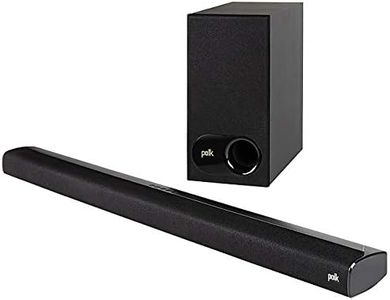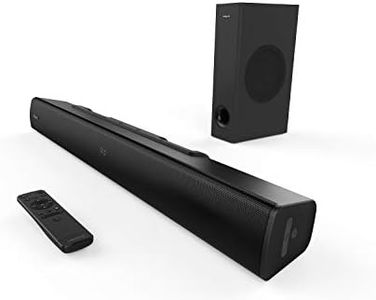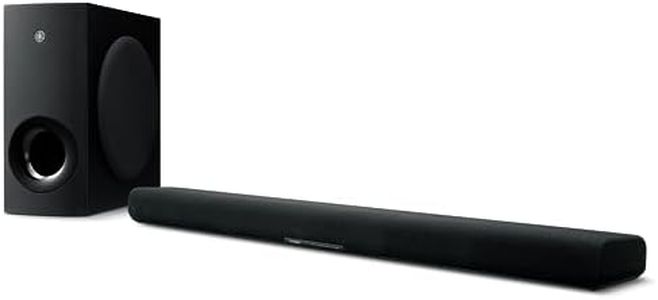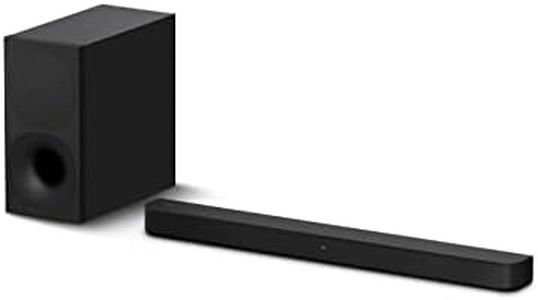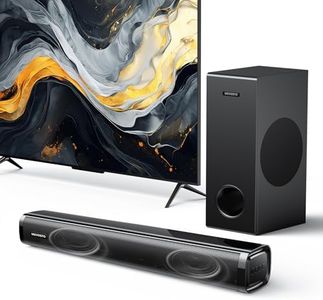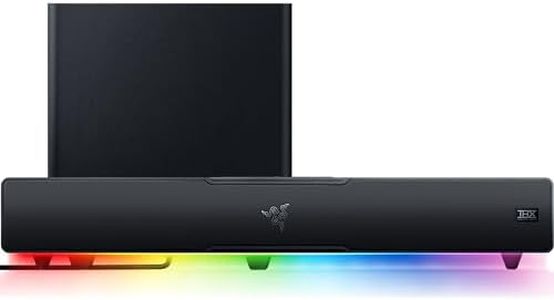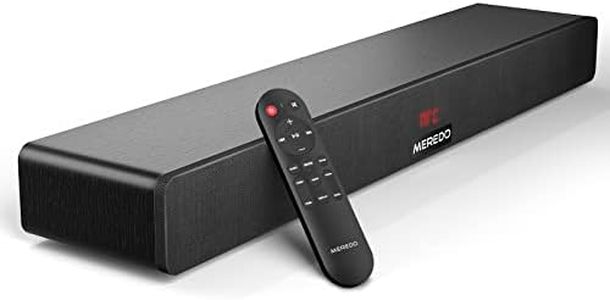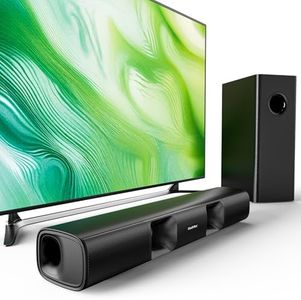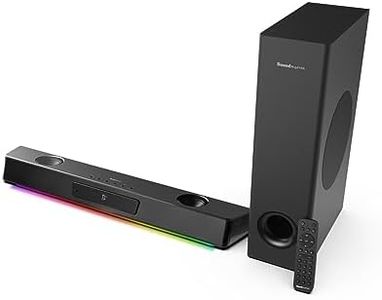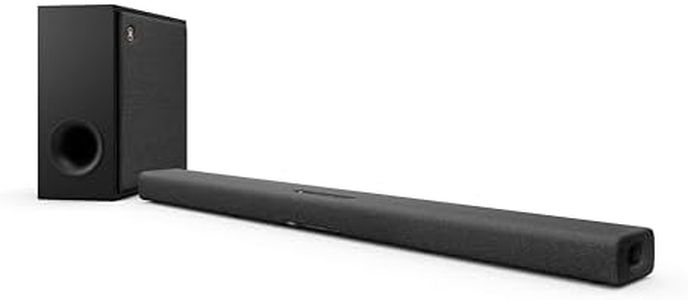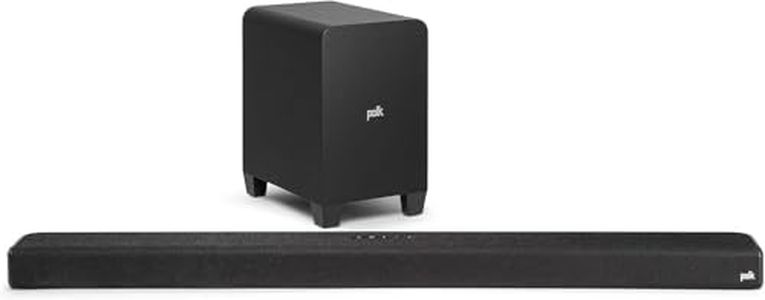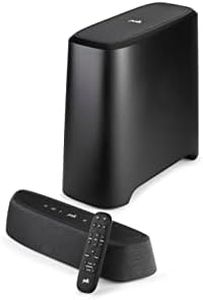We Use CookiesWe use cookies to enhance the security, performance,
functionality and for analytical and promotional activities. By continuing to browse this site you
are agreeing to our privacy policy
10 Best Sound Bar With Subs
From leading brands and best sellers available on the web.Buying Guide for the Best Sound Bar With Subs
Choosing a sound bar with a subwoofer can greatly enhance your TV and movie watching experience. Sound bars are popular because they offer better sound than most built-in TV speakers, and adding a subwoofer means you'll get more impactful and immersive bass. To pick the best one for you, focus on how you plan to use it, your room size, and what sound quality you expect. Understanding the main specifications will help you choose a sound bar and subwoofer combination that fits your needs and space.Sound ChannelsThe sound channels indicate how many different audio channels the sound bar can produce. Common sound bar setups are 2.1 (two main speakers and one subwoofer), 3.1 (three main speakers and one subwoofer), or 5.1 (five main speakers and one subwoofer). More channels mean a richer, more immersive sound, especially for surround effects. If you mostly watch TV or listen to music, a 2.1 setup is usually enough. If you enjoy movies with lots of action or want a theater-like experience, stepping up to 3.1 or 5.1 can deliver more dramatic and directional sound.
Subwoofer TypeSubwoofers in sound bar systems can be either wired or wireless. A wired subwoofer connects directly to the sound bar, while a wireless one can be placed anywhere in the room for more flexibility. Wireless subwoofers are great if you want less cable clutter and options for placement. If your room is small or your setup is close together, a wired subwoofer may be just fine. Consider your space and your desire for a tidy setup when choosing between the two.
Connectivity OptionsConnectivity refers to how the sound bar connects to your TV and other devices. Key options include HDMI ARC (Audio Return Channel), optical audio, Bluetooth, and sometimes Wi-Fi. HDMI ARC is usually the easiest and gives you the best sound quality, while Bluetooth lets you stream music from your phone. If you plan to connect multiple devices or want the best audio performance, prioritize a sound bar with HDMI ARC or eARC. If you only need basic connections or want to stream music wirelessly, Bluetooth is a helpful feature.
Audio Formats SupportedSound bars can support various audio formats like Dolby Digital, DTS, or Dolby Atmos. These formats affect sound quality and immersion. Basic formats like Dolby Digital are good for most TV shows and movies. Dolby Atmos offers a more 3D sound experience, especially for action movies or games. If you mostly watch regular TV or casual content, basic format support will do. If you’re a movie buff or want the most lifelike sound, look for a sound bar that supports advanced formats like Dolby Atmos.
Size and DesignThe size and design of the sound bar and subwoofer matter for both sound performance and how well they fit into your room. Sound bars come in a range of lengths and heights, so it’s important to choose one that fits under your TV or on your shelf. Subwoofers also vary in size; bigger ones often produce deeper bass but require more floor space. Make sure to measure your available space and consider how visible you want the devices to be in your room before deciding.
Adjustability and Sound ModesSome sound bars offer adjustable sound modes like ‘movie’, ‘music’, or ‘night’, and may have customizable bass and treble levels. These features let you tailor audio to your preferences or specific situations. If you enjoy switching up how things sound depending on what you’re watching, look for a model with multiple sound modes or manual controls. If you prefer a simple plug-and-play experience, this may be less important.

